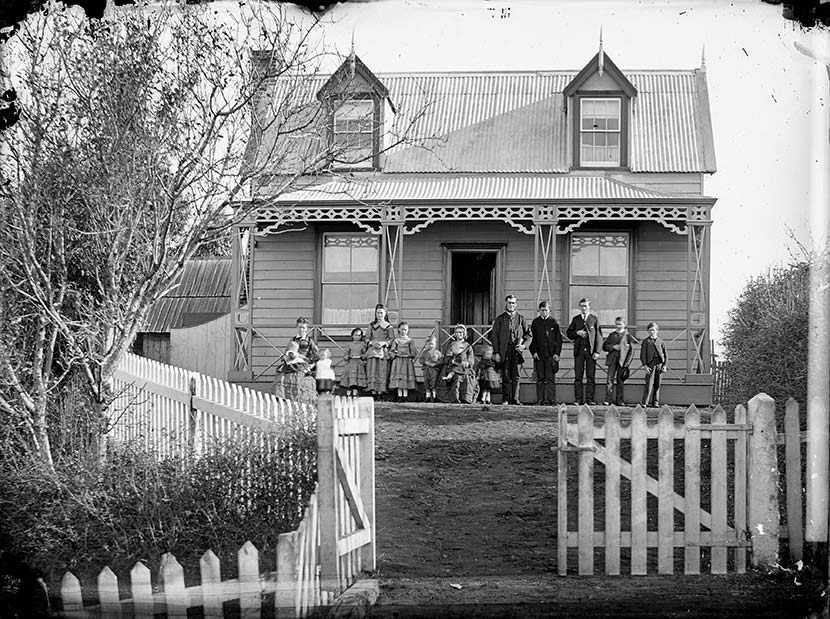
Mr and Mrs Roots and their large family pose for the camera in front of their Whanganui home in the 1870s. The house started as a two-bedroom cottage but was enlarged several times to accommodate more children. In this decade especially there was both high fertility and high mortality in Pākehā society. This took its toll on women of childbearing age, who had to deal with the physical stress of bearing many children. Consequently men had a longer life expectancy. Mrs Roots predeceased her husband by a number of years.
Te whakamahi i tēnei tūemi
Alexander Turnbull Library, William James Harding Collection (PAColl-3042)
Reference:
1/1-000186-G
Photograph by William James Harding
Permission of the Alexander Turnbull Library, National Library of New Zealand, Te Puna Mātauranga o Aotearoa, must be obtained before any re-use of this image.






Tāpiritia te tākupu hou